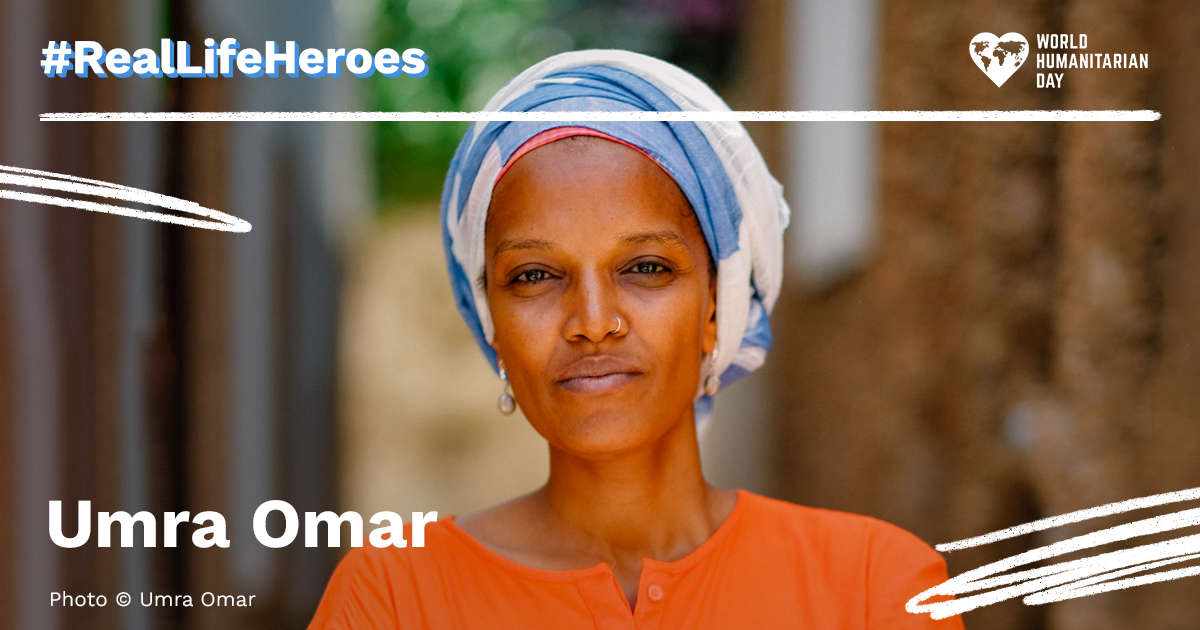Providing life-saving support during the pandemic
On World Humanitarian Day (WHD) August 19, the world commemorates humanitarian workers killed and injured in the course of their work, and we honour all aid and health workers who continue, despite the odds, to provide life-saving support and protection to people most in need.
This year World Humanitarian Day comes as the world continues to fight the COVID-19 pandemic over recent months. Aid workers are overcoming unprecedented access hurdles to assist people in humanitarian crises in 54 countries, as well as in a further nine countries which have been catapulted into humanitarian need by the COVID-19 pandemic.
This day was designated in memory of the 19 August 2003 bomb attack on the Canal Hotel in Baghdad, Iraq, killing 22 people, including the chief humanitarian in Iraq, Sergio Vieira de Mello. In 2009, the United Nations General Assembly formalized the day as World Humanitarian Day.
#RealLifeHeroes
A global campaign that celebrates humanitarians - a “thank you” to the people who have committed their lives to helping others
On August 19, the eleventh year that we have marked World Humanitarian Day, we are paying special tribute to the real-life heroes who have committed their lives to helping others in the most extreme circumstances throughout the world.
The campaign focuses on what drives humanitarians to continue to save and protect lives despite conflict, insecurity, lack of access and risks linked to COVID-19.
This year, COVID-19 has been the biggest challenge to humanitarian operations around the world. The lack of access and restrictions placed by Governments around the world has resulted in communities, civil society and local NGOs being the frontline of the response.
Therefore, the campaign presents the inspiring personal stories of humanitarians who are treating and preventing COVID-19, providing food to vulnerable people in need, providing safe spaces for women and girls in lockdown; delivering babies; fighting locusts and running refugee camps, all amid the COVID-19 pandemic.

Strategic priorities of the Global Humanitarian Response Plan to COVID-19
The Global HRP is articulated around three strategic priorities:
* Contain the spread of the COVID-19 pandemic and decrease morbidity and mortality.
* Decrease the deterioration of human assets and rights, social cohesion and livelihoods.
* Protect, assist and advocate for refugees, internally displaced people, migrants and host communities particularly vulnerable to the pandemic.
It is true that our obsession with myths and legends has been with us since the dawn of culture. Their fictional fantastic feats, embodied enemies, and arduous journeys teach us how to dream big and summon the courage needed to do what’s right.
However, the heroes of our world, here and now, are just as worthy of admiration and celebration because they’re real — they’re real: choosing to help in the most extreme circumstances — and their stories show that real life heroes exhibit an uncanny ability to persevere despite the odds, and to do so with humility and dedication.
Join the global conversation today by using the hashtag #RealLifeHeroes. Watch the global launch on Wednesday, 19 August 2020, 7pm Eastern Standard Time (New York) at https://www.youtube.com/user/ochafilms
Umra Omar | Kenya, Safari Doctors
#RealLifeHeroes
Umra, from the Lamu archipelago in Kenya, is the founder of Safari Doctors, a mobile doctors unit that provides free basic medical care to hundreds of people every month from more than 17 villages in Lamu. While modern healthcare is modeled on urban realities, 70% of Kenya's population lives in remote areas. A key perspective shift was not seeing healthcare as static, but something that could actually reach out to the people in need.
"I think humanitarian work needs to stop being a 'by the way' thing. It should be something that we are living as the norm."

Photo gallery
See more humanitarian heroes on the COVID-19 pandemic front lines.
These real-life heroes are doing extraordinary things in extraordinary times to help women, men and children whose lives are upended by crises. -- António Guterres
Official Logo

Facts & Figures
- In 2019, 483 aid workers were attacked: 125 killed, 234 wounded and 124 kidnapped in a total of 277 separate incidents.
- Most of the attacks occurred in Syria, followed by South Sudan, Democratic Republic of Congo, Afghanistan, Central African Republic (CAR), Yemen and Mali.
- WHO reported 1,009 attacks against healthcare workers and facilities, resulting 199 deaths and 628 injuries.
- 90% of all attacks worldwide were on national staff.
- More data from Aid Worker Security Database
Humanitarian aid delivered globally in 2019
- 28.9M children were vaccinated globally against measles.
- 6.9M children (6—59 months), pregnant and lactating women with acute malnutrition were newly admitted for treatment globally.
- 32.2M people provided with access to safe water for drinking, cooking and personal hygiene.
- 92.6M children and caregivers worldwide accessed mental health and psychosocial support.
- 42.0M livestock reached with vaccination and treatment campaigns.
Additional Resources
Documents
- Convention on the Safety of United Nations and Associated Personnel
- General Assembly resolution (A/RES/63/139) on Strengthening of the coordination of emergency humanitarian assistance of the United Nations (establishing World Humanitarian Day)
- General Assembly resolution on the Safety and security of humanitarian personnel and protection of United Nations personnel
- Report of the Secretary-General on the Safety and security of United Nations and associated personnel
- Human Security 2014-2017 Strategic Plan
Related websites
- Office for the Coordination of Humanitarian Affairs (OCHA)
- Delivering Humanitarian Aid
- Inter-Agency Standing Committee (IASC)
- UN World Food Programme (WFP)
- UN Refugee Agency (UNHCR)
- UN Children's Agency (UNICEF)
- World Health Organization (WHO)
- Remember the Fallen
- The Reham al-Farra (RAF) Memorial Journalism Fellowship
- News related to Humanitarian Aid






